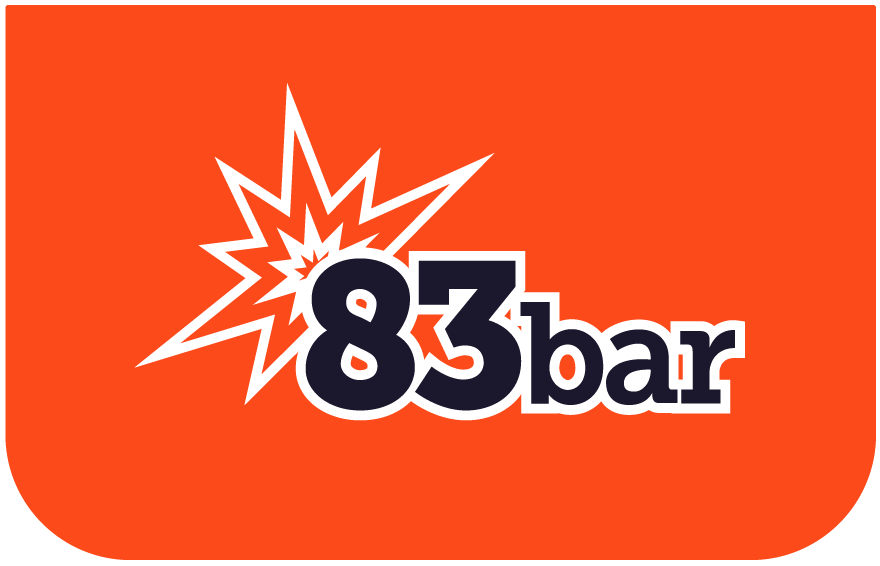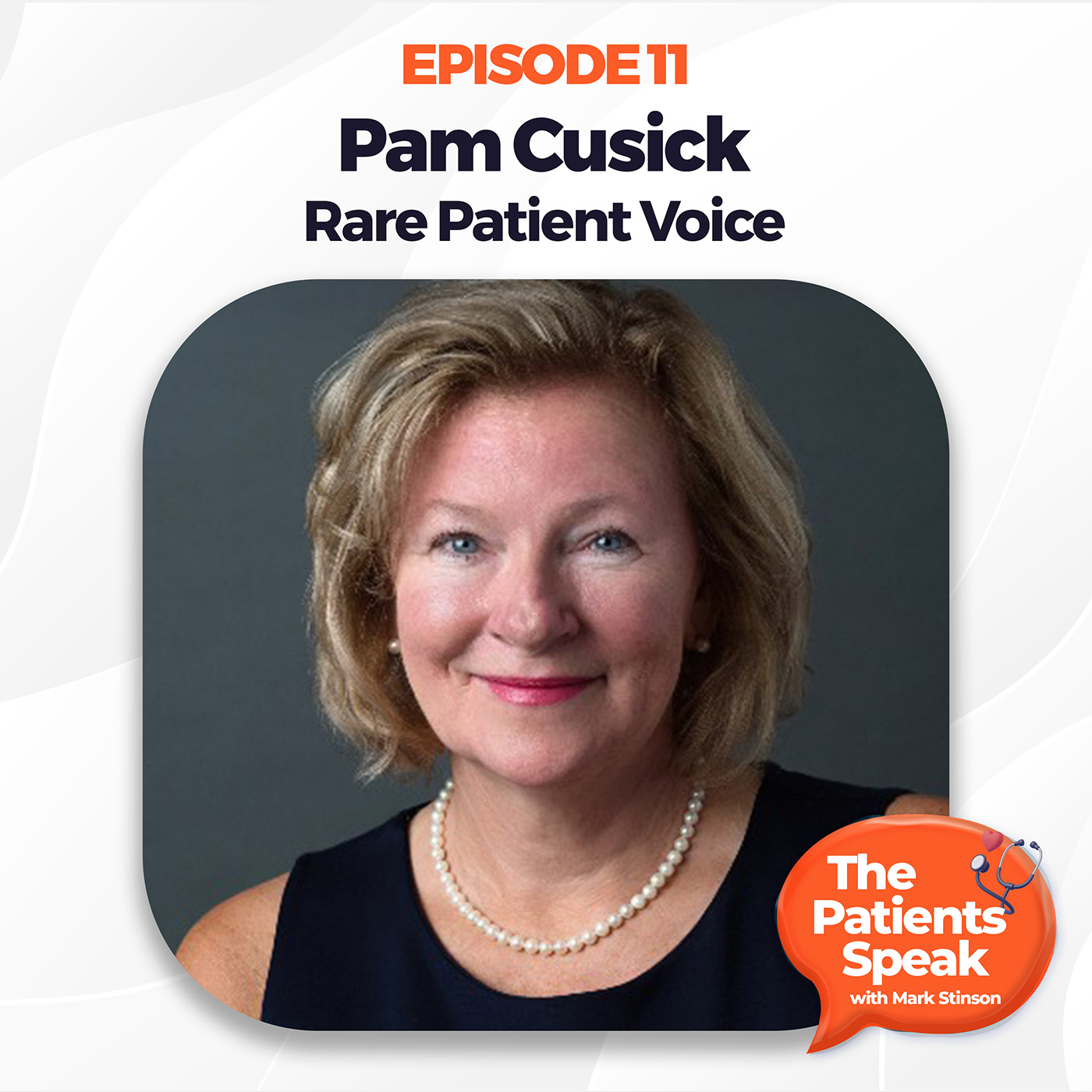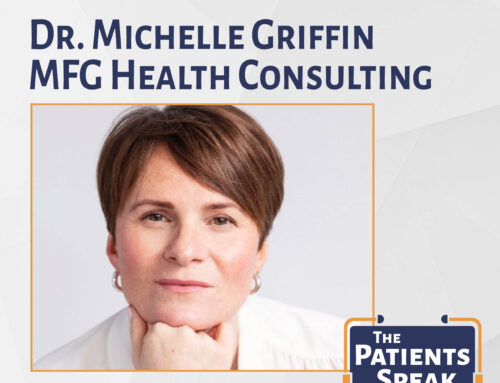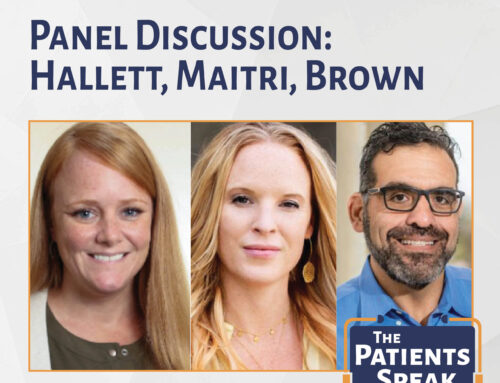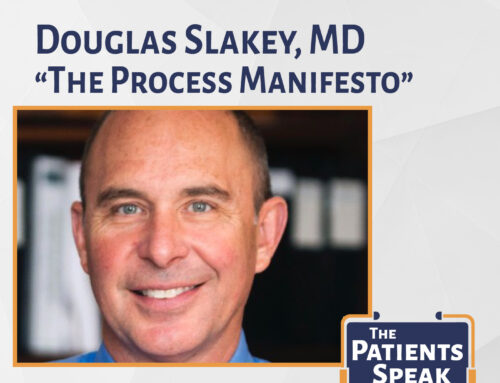Welcome back to our podcast, The Patients Speak, where we’re combining the business and science innovation of accelerating the patient journey with what we need to hear from the patients themselves and when we listen to their voices.
And we have a great guest to help enlighten us in that area today, Pam Cusick, Senior Vice President of Rare Patient Voice, an organization that connects patients with opportunities to let their voices be heard.
Mark Stinson, host:
Hello again and welcome back to our podcast, The Patient Speak, where we’re combining the business and science innovation of accelerating the patient journey with what we need to hear from the patients themselves and when we listen to their voice. And we have a great guest to help enlighten us in that area today, Pam Cusick, Senior Vice President of Rare Patient Voice, an organization that connects patients with opportunities to let their voices be heard.
Pam, can’t thank you enough for bein’ on the show.
Pam Cusick:
Oh, thanks for having me.
Mark Stinson, host:
Well-
Pam Cusick:
I’m excited to be here.
Mark Stinson, host:
Yeah. I mean I wanna know all about the organization and exactly how it works but I think, yeah, just to jump right in on that very topic, yeah, we, our audience might include companies and researchers and clinicians and also other advocacy groups. But, what do you think we need to hear from the patients the most? W-what do you think we’re missing when we think we’re listening to patients but we might be missing the real story?
Pam Cusick:
Hmm. I think we need to hear how patients feel, um, we think a lot about will this treatment work or will this treatment do this or that or the other thing but sometimes, we need to hear sort of the whole patient’s experience and their whole journey because, you know, in the, the short time that you’re in speaking with your physician, you might not be able to tell them, “Yeah, this, this, you know, new medication I’m taking helps with whatever my, you know, my symptoms were but it really makes me have a bad cough.” You know? Eh, you might not get to those things and some of those things, they would rather, you know, they would rather one symptom over the other if they could choose but we’re not really letting them sometimes.
Mark Stinson, host:
Mm-hmm. A-are you thinking that maybe we’re focused on sorta what they have and, you know, what the diagnosis is and in a clinical trial, maybe what the inclusion criteria is but what about that emotional piece? W-what do you hear?
Pam Cusick:
Well, uh, so the, you know, it’s that when we hear from patients after they’ve participated in, in one of our studies, a lot of times, it’s, you know, so nice that someone really cared about what, you know, kind of hearing about my whole story and my day-to-day journey. A lot of, you know, patients, they are living with this day in, day out and their families are too. And you know, as a patient, we don’t always wanna keep telling our families, you know, about whatever is going on. So when they participate in a, a let’s say a, um, an interview or a focus group and they can really share you know, this is, this is how this has impacted my life and this is how, um, you know, how I feel when I get up in the morning and this is how it’s impacted my relationships. It’s a big deal and those are things that we’re maybe not focusing on as much in some of the, you know, we and, and it’s so important to, to come up with treatments for symptoms and, and cures for diseases that is all, you know, every patient wants that.
But the other thing that they need is there’s a lot more that comes to, you know, that comes with being a patient. It’s how do you live everyday if, if your, um, condition has caused a specific disability? Eh, can you work? Or, is your employer willing to give you accommodations? What are your rights? There’re a lot of things that, you know, th-there’s a bigger picture to a patient. They’re a person with, you know, they’ve got to get to the store and pay for their bills and all of that, do their laundry, whatever it is, you know. And those are things that, that maybe we could do something about. Maybe we could help them with but we’re, we’re not really hearing that part because we’re not focused. We’re focused more on the, the treatment and the cure and not the whole person.
Mark Stinson, host:
Hm, and their real life experience, yes.
Pam Cusick:
Exactly.
Mark Stinson, host:
Well, Pam, tell us about Rare Patient Voice, the organization and what you do.
Pam Cusick:
Sure so, um, as you mentioned, we connect patients and caregivers with all types of research opportunities. Um, that could be focus groups, interviews, surveys, clinical trials, online communities, all, um, to improve products or services, um, that are being developed for them. So we, um, the way that we meet patients and invite them to join our community has been to go to events. So we would go to, prior to COVID, we would go to, um, you know, the National Hemophilia Foundation Conference or the National Sickle Cell Conference and we would meet patients and caregivers and invite them to join our community.
Um, and then when we have a specific, um, study request, we’ll connect them with that request and they can participate or not, participate if their, you know, if it doesn’t fit with their, their agenda, um, or their, you know, their schedule but, um, if they choose to participate, we pay them at a rate of $100 an hour. So that you know is, is great and, you know, wonderful and they should be compensated for their time because they are the experts in what they’re talking about, um, and what they’re living with. But most of them would do it for just, you know, just to be able to help other people who come after with, be after them and people who may be, you know, on that same diagnostic journey, um, they may be able to shorten that for somebody else by saying, “Hey look, you know, this is the, you know, this what I did and this is what I was diagnosed with along my path.” And now, you know, that may shorten someone else’s or make someone else’s experience better.
Um, so we also, um, and thank goodness for this, we have a wonderful patient advocacy team that has connected with over 2800 referral partners around the world to help us to, um, connect with say smaller, uh, support and advocacy groups and get the word out to more patients who might wanna share. And the good thing about that and we’re, they’re still in full force today but during COVID, it was a really helpful thing because we couldn’t go out to any event. So, um, we were able to continue to spread the word and, and bring opportunities to patients and caregivers.
So right now, we have over 100,000 patients and caregivers, um, who have, have joined our community in over 750 condition and we’re in the US, Canada, the UK, Germany, France, Italy, Spain, Australia and New Zealand now. So we’re, we’re, you know, trying to expand and give as many patients the opportunity to share their experiences and share their voices.
Mark Stinson, host:
Mm-hmm.
Pam Cusick:
Um, on the kind of, client side of things, we are expanding and, and kind of getting the word out too. We started more so in market research with companies that were, kind of, uh, uh, had a drug coming into market so they would want to see now, what kind of language do we … how do talk to the patients? What should we say? How can we engage them? Um, and now, we have now expanded to include clinical trials to real world evidence studies and wherever the patient, kind of, their, their expertise and their voices needed we can or their, you know, physical, you know, presence is needed, um, we’re happy to do that.
We even have some, um, some clients who have come to us who patients to do, like video vignettes to hear, you know, how do they talk about their conditions so that they can bring that back to their sales teams. Because a lot of times, the sales team might really not, they know th- they know clinically. They understand the patient but they don’t, they’ve never met a patient with say a rare condition, um, but this gives them the opportunity. So it, you know, we’ve, we’ve really expanded the way we can bring the patient voice to different sectors of the, of the health care kind of community.
Mark Stinson, host:
Yes, you really hear it in their words. Well, Pam, I’m curious. You know those of us in the industry, we’re somewhat familiar with focus groups and patient advisory boards and you know, i-it’d be great to reach out to some patients we might say. I-I’m curious the other way around. Do the patients really recognize when you go to some of these events, you know, and certainly in 750 conditions and beyond but do they recognize how valuable their story and their voice might be? Are they surprised that they would have a chance to tell the companies, you know, what they go through?
Pam Cusick:
A lot of times they are surprised. It’s, you know, we’re, we are often times explaining what kind of research they might participate in and why their voice is valuable. I’ve heard patients say, you know, “Why would anyone wanna talk to me about this?” Um, which is, you know, from my standpoint kind of blows my mind because they’re, you know, they’re living 24 hours a day with a condition that no physician, you know, experiences and, and so, and you know, industry does, you know, a, a good job of trying to understand, you know, kind of the symptomology and all of the, you know, those pieces but the, but the kind of life experience is what informs so much of what can be done for patients and they don’t always, they don’t always realize their value. Some do and I think we are giving, you know, we’re helping patients, you know, as many as we can to understand that look there’s an opportunity for you to share your experience which can make a difference for other people, for you, your family, other people in your, you know, in your community at large, um, and then, you know, they feel a real power in that.
Where there was a, a one patient that we had worked with that, um, this is like a year, a couple of years ago, um, I was, I did a, an, an interview for a magazine and so they took my side and then wanted to talk to a patient. But I, when I read her story, it was really amazing because she was saying, “I really didn’t know that I had a value in this and now I’ve kind of, I’ve found my voice,” and she’s an advocate and, and really kind of grown from the experience of being able to share, you know, through focus groups and interviews and so on.
So it, um, I think it helps in a lot of different ways and then, you know, it’s the, you know, people like to share information. So, you know, you may be in a small, you know, a small support group and then you tell a couple of people like, “Oh, I got to share my experience with my disease,” and people think, “Wow! That … How can I do that?”
Mark Stinson, host:
Mm-hmm.
Pam Cusick:
Um, and it makes a difference for them in the long run. So to answer your question, it, they are often surprised that anyone wants to talk to them. Um, and a lot of times, now, post-COVID, people understand a little bit more about clinical trials but a lot of people don’t really even understand research. There’s that problem. What is a focus group? What’s a, a patient advisory board and, and why would I be part of that? I’m not an expert. And the truth is they are the expert. They just need to recognize that.
Mark Stinson, host:
Yes. Well, and you mentioned this idea of, you know, being heard that first and foremost I just want somebody to listen.
Pam Cusick:
Mm-hmm.
Mark Stinson, host:
You know and this goes back to the classic story of not having enough time in the doctor’s office to ask all my questions or what have you but there is this exchange, isn’t there? We’re listening to patients, they’re listening to us. Uh, what, what have you seen as far as the actionability, you know, that w-we’re actually not just gonna learn and say, “Well, that was a very powerful story,” but actually that we’re going to maybe change something or develop a new program or, you know, change our mindset towards a particular condition. What have you seen in that area?
Pam Cusick:
So ah, you know, there, there are probably lots of different stories but I know, uh, this is one of my, the, the, a gentleman who works with us, um, he is in the MS community and he, um, he is absolutely sure that his input in a focus group is what changed the design of I believe the product is called the Hurricane but it was, you know, they were looking at, you know, kind of different, different designs for this, this, um, item and how it would work best for patients with MS and he is convinced that he was the one who had them add I think it was a third prong to the Hurricane. Um, but you know, that’s a, an example of, you know, where he gave input and the change was made, um, which is always nice to hear.
A lot of times, we don’t, we aren’t necessarily privy to the, the changes that are made. It’s the you know, the we are the connector. We’re like the Match.com, um-
Mark Stinson, host:
Mm-hmm.
Pam Cusick:
And we connect the patients with the researcher who takes that back and them, um, you know, makes their changes and, and updates to their programs or their product, you know, designs and so on. Um, sometimes we do some internal studies as well just to keep patients engaged because as you can imagine, not everyone of those 100,00 patients and caregivers, um, you know, they’re not always, there’s not always research going on in their, you know, within their indication. So we like to try to, to do this a couple maybe, you know, once or twice a year to give them an opportunity to participate in something and we’ll share the research back with them.
Um, but there have been some very interesting, you know, interesting outcomes from some of that, you know, with the, the one that pops into my mind right now is we did, um, a couple years ago and these are all on our website, a little, uh, a study about, um, patient advocacy groups and how patients feel about, you know, about advocacy groups and how they work with pharma and so on. And one of the things that I found most striking is that a lot of patients didn’t know that there were advocacy groups f-f-, that weren’t connected to advocacy groups in their disease area. And so, when you’re, when you’re involved in going to different patient event, you think everyone must know about this, this advocacy group but they don’t. Um, and you know, w-where the advocacy groups could be really helpful on in giving them information about their condition or so on and so forth, they really don’t know that they’re out there and that really surprised me. Um, and so, you know, I think from that, making, you know, some changes to how advocacy groups connect with patients is another, you know, another good area.
Mark Stinson, host:
Yeah, that is sort of that internal thinking, isn’t there? Oh, everybody must know about them and there’s an acronym for every group so we all say these alphabets but I-I-I do recall what you’re saying, having a patient advocacy group in, in a, a rare disease and the patient said, “I’ve never even been in a meeting, you know, with more than one other person who has my disease.” So just being in this room, uh, was an experience for them.
Pam Cusick:
Sure. Yeah. I’m sure it was. And it was that, for whatever reason surprised me because, you know, I thought that that would be exactly what a patient did. They would go, you know, as soon as they found out they had X condition, they would go to the internet and find the advocacy group but that’s not true.
Mark Stinson, host:
Mm-hmm. Well let’s speak to another, uh, I’ll say department in the company. You know, uh, focus groups and advocacy groups, you know, maybe the marketing, or the commercial teams know these things very well but I-I think about the clinical research folks and then the medical affairs side of things. W-what are the applications of groups like this that are not really, quote, “marketing research” but certainly it’s a chance to listen and learn from the patient’s experience. What have you seen there?
Pam Cusick:
So, you know, more and more, we have clinical research organizations reaching out to us or you know, for to, for a clinical trial recruitment but the other piece of that that I find interesting is, um, we have more and more who are looking at kind of, pre, pre-clinical trial trying to develop, um, patient outcomes and what, you know, what would make sense and what, what do we really need versus what would be nice to have information. Do you really need, you know 12 fingersticks from a 6-year-old or could you actually get the data you want, you know, the information you need, um, from a, a smaller number.
Um, so they’re doing that kind of proactively and getting patient input on that. The other thing, um, that we see is some of our clients coming to us to have patients review consent forms and, and the documentation that they might need to read, understand and sign, um, to make sure that it is patient-friendly. There’s a whole element of health literacy that is coming into play that we wanna make sure that, you know, I mean, there are always supposed to be informed consent is that you’re supposed to understand what you’re signing but we all know that there’s a lot of legal jargon in those documents and not always clear. So we have clients coming to us to do that kind of the pre-clinical.
And then another, um, another thing that I’ve seen is clients who come to us post-clinical research, um, where they want to develop a patient-friendly summary of the clinical outcomes and they have patients, you know, review and, and comment and make sure, you know, that is this usable information and, and if not, how can we change it to make it usable so that they can take it to their doctors and say, “Here is the outcome from this trial. Is this something that I can use? Is this something that I can do?”
So it’s, you know, that, that’s really fascinating to me to have them involved on kind of all parts of the clinical, kind of that clinical journey beforehand, understanding what out, what are the, what are the outcome re- measures that makes sense? What are you as a patient, you know, what would you wanna see if, you know, if you’re, if this drug was gonna make an impact? What would matter to you? Not just what I as a physician think but you know, or, or as a clinician think but what would be a, a meaningful outcome and then, uh, enabling them to, kind of, use that information afterwards is really important.
Mark Stinson, host:
Yeah, these sound like valuable tools. Good applications in the methods.
Pam Cusick:
For sure.
Mark Stinson, host:
You know, certainly, ah, a-a-and the sponsor of our podcast 83bar is involved in this patient recruitment for clinical trials and, and I also see the Zebra logo on your background there. You know, we call them needles in a haystack, uh, you know, Zebras. It’s really difficult to find patients in these rare diseases. Um, eh, I guess, looking in all the ways we can, uh, reach, attract, engage, educate, you know, make sure we connect with these patients, uh, a-are they open to these messages? Are they ready? Are they receptive, uh, in your experience?
Pam Cusick:
I think so. I mean the, the patients that we meet and engage with, you know, are, they want to share their experiences. They want to, you know, be able to make a difference. It’s, you know, hearing back from them the, you know, kind of, ah, eh, and it’s not even thanking us but, you know, thanks, thanking us for the opportunity for them to be able to share this, you know, share their experience makes a huge difference. And I see, you know, more and more, um, you know, parents who are, are, you know, of children who have, you know, a rare diagnosis not willing to just sit by and wait for something good to happen. They jump in full force and, and try to make a difference and that’s a huge deal.
I think that, you know, the more we can get out there and the more we do share that, you know, companies want to hear from you and, and they want patient, you know, they want to understand not only, you know, the, your physical experience but what’s happening to you day to day. I-It’s that same, you know, people tell each other, they tell their neighbors or the people in their, their online community and then suddenly more and more people wanna be able to share their experience. So I think it’s very um, I think getting the, the word out, you know, through these different groups and helping them to understand how valuable their input is, is really, you know, is really a great thing.
Mark Stinson, host:
Yes. Well my guest is Pam Cusick of Rare Patient Voice. Pam, it’s been a great conversation a-as we think towards the future now, yes, certainly your background, a-and market research and now in developing this kind of connection platform in Rare Patient Voice, I-I wanted to dial back into this emotional side of things. Yeah, we can learn a lot about conditions and as you say, read the clinical profile and see what the disease is all about and we can also think about the treatments and what, we always say patient- “Well, here’s what patients ought to do,” but if we turned it inside out, what do we need to hear about how the patients feel?
Pam Cusick:
I think we need, I think we need to listen to what they say they need. So where they need, um, kinda going back to one of the first things they said, you know, it’s, eh, yes, I need to feel better. I need a-a treatment for this pain but if it’s, if it’s causing some other problem for me, you need to hear that because maybe the pain isn’t as bad as that other problem that this is causing. Um, you know maybe really listening to what are the, what are the life impacts of this, of this condition because it’s much greater than I have, you know, I have, yes, I have tremendous pain and I can’t get up but what other resources might they need to help them to kind of live a full life. You know, back to, you know, even just because you have a rare disease or any condition doesn’t mean you don’t wanna have a job or you don’t wanna have relationships and, and those are pieces that no one, people aren’t really getting help with those pieces of things.
Um, you know, and I think that’s the kind of dealing with the whole patient and hearing what do they need beyond a treatment for this particular pain or, or issue. I keep saying pain but you know, the, the, the problem that their condition is causing but what other resources and help might they need because there’s a lot. We are very complex beings and it’s not just that I, you know, oh, Pam and I have this condition, it’s that I have a life and I have kids and I have a dog and, and a job and, and I might need help with some, some or all of those things and where can I get that? Some of that would be what we need to hear.
Mark Stinson, host:
Yeah, it’s almost as big as bigger definition of pain.
Pam Cusick:
Mm.
Mark Stinson, host:
We may not just be talking about the physical pain but the burden, the pain of their condition-
Pam Cusick:
Right.
Mark Stinson, host:
… on their life. Yes. Very strong. Well, Pam we’re at-
Pam Cusick:[inaudible 00:22:53].
Mark Stinson, host:
Yes.
Pam Cusick:
Yeah.
Mark Stinson, host:
I can’t thank you enough for the conversation. Really enjoyed getting to know you and the group.
Pam Cusick:
Thank you so much. I appreciate the opportunity.
Mark Stinson, host:
Yes, and well, listeners, all the links to Pam and her organization are in the show notes if you’d like to connect. And come back again for our next episode. We’re gonna continue these conversations with leaders in healthcare across, you know, organizations, across, uh, providers, uh, companies, and even patient advocacy groups themselves to really understand what we need to hear from the patients and what leaders hear when they listen to the patient speak. So come back again next time. I’m Mark Stinson. Bye for now.
